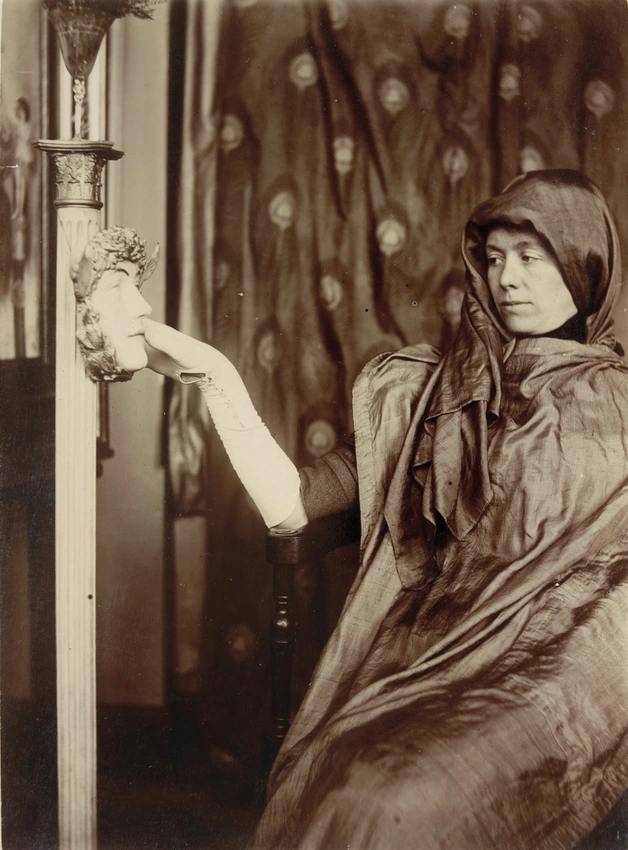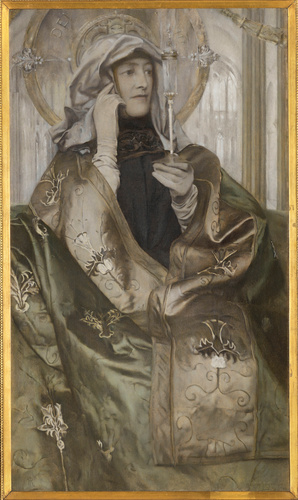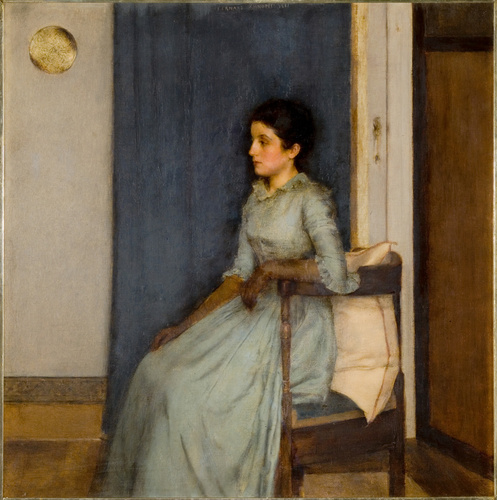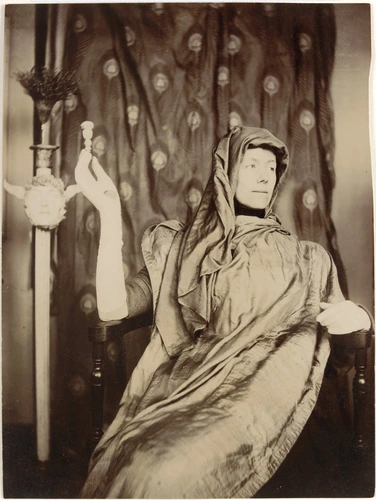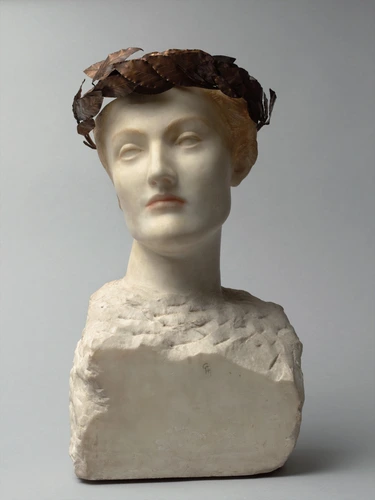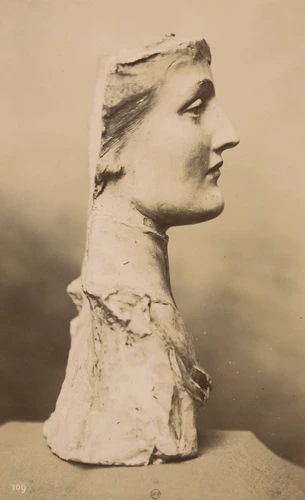Marguerite Khnopff, soeur de l'artiste, étude pour "Le Secret" de 1902
Throughout his life, the Belgian Symbolist painter Fernand Khnopff carefully concealed the role photography played in the creation of some of his paintings. In 1916, he even gave a lecture at the Académie des Beaux-arts condemning the artistic pretensions of photography. However, it was discovered after his death that Khnopff himself had produced around forty photographs of Marguerite, who was both his sister and his favourite model. In them, she adopts hieratic poses in settings that give a strange impression with the décor and costumes alluding to Antiquity and the Far East.
The whole of Khnopff's interior world found substance in these photographs that he then used for producing paintings and drawings. His photographs are already imbued with the mystery and intensity found in his definitive works. Khnopff often did no more than rework the photographed motif in pastel or oil, as he did for The Secret (Bruges, Groeningemuseum).
In emphasising the theatrical aspect of photography, Khnopff was heir to the photographers who were quite close to the Pre-Raphaelites such as Julia Margaret Cameron, Lewis Carroll and Lady Hardawen. This style became increasingly important in the 20th century particularly with the conceptual artists who photographed their "performances".
